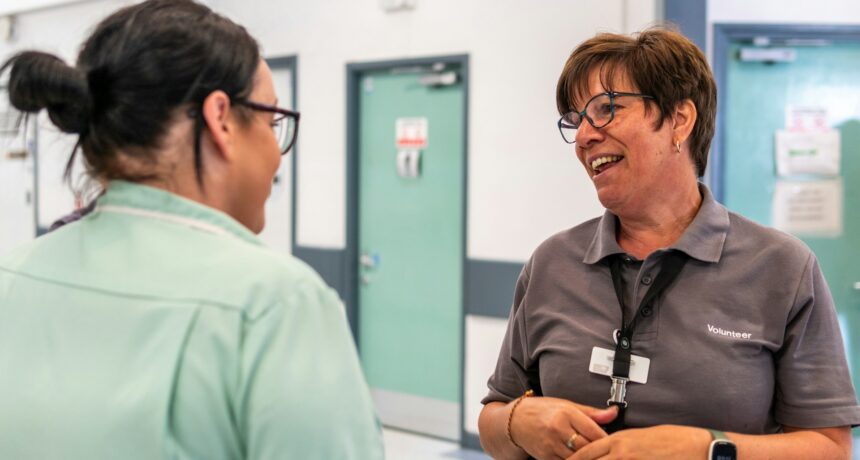What Is Full-Cycle Recruiting?
Full-cycle recruiting is a comprehensive approach that involves a single recruiter managing every step of the hiring process. From initial job requisition and sourcing candidates to conducting interviews and extending job offers, a full-cycle method ensures consistency and accountability throughout the hiring process.
Expect a streamlined and efficient hiring experience that benefits the organization and potential candidates. By centralizing recruitment responsibilities, companies can achieve faster hiring times, better candidate experiences, and more successful hires.
What Is Full-Cycle Recruiting?
Full-cycle recruiting, also known as whole-life cycle recruiting or end-to-end recruiting, is a comprehensive and integrative approach to the hiring process. In this model, a single recruiter is responsible for managing every stage of the recruitment cycle from start to finish, ensuring a seamless and consistent experience for both the candidate and the hiring organization.
Unlike traditional recruitment methods, where different HR specialists handle various aspects of the process—such as sourcing, interviewing, and onboarding—full-cycle recruiting consolidates these responsibilities under one recruiter. Such a method simplifies the workflow and fosters a stronger relationship between the recruiter and the candidate, as the latter has a single point of contact throughout their journey.
A full-cycle approach can lead to improved communication, a more personalized experience for candidates, and, ultimately, better hiring outcomes for the organization. The comprehensive nature of full-cycle recruiting aligns the recruitment process closely with the organization’s strategic goals.
What Is a Full-Cycle Recruiting Process?
1. Preparing
The recruiter collaborates with the hiring manager to gather all necessary information about the job opening. Such information includes understanding the required skills, experience, personality traits, and educational background needed for the role. Based on this information, the recruiter creates an internal job description and writes the job posting for external platforms.
2. Sourcing
In this phase, the recruiter identifies potential candidates. It may also involve reaching out to passive candidates, utilizing sourcing tools, and contacting previous applicants who might now be a better fit. The aim is to build a list of qualified candidates.
3. Screening
The recruiter screens candidates through resume reviews, phone or video calls, and sometimes automated chatbots to handle initial prescreening, which also mitigates bias. The screening process helps narrow the pool of applicants to those who best meet the job requirements.
4. Selecting
The recruiter arranges interviews with top candidates and provides structure to the process, ensuring consistency and compliance. The selection stage involves coordinating with hiring managers and providing feedback to candidates.
5. Hiring
Once the interview process is complete, the recruiter, often in collaboration with the hiring manager, decides on the most suitable candidate. The recruiter then handles job offers, negotiations, reference checks, and background checks and sets the start date.

6. Onboarding
The recruiter ensures the new hire’s smooth transition into their role through the onboarding process. The transition involves preboarding activities like sending the employee handbook, inviting them to team activities, and engaging with them to prevent second thoughts. The recruiter continues to check in with the new hire, fostering a supportive relationship.
Pros and Cons of Full-Cycle Recruiting
Pros
Full-cycle recruiting offers several advantages that can enhance the efficiency and effectiveness of the hiring process. Consolidating responsibilities ensures a more streamlined and cohesive recruitment experience for both recruiters and candidates. Here are some of the key benefits:
- Improved Communication: With one recruiter managing the entire process, communication is more consistent and clear. It reduces the chances of miscommunication and ensures that candidates and hiring managers are well-informed at every stage. Consistent communication helps in building trust and transparency.
- Stronger Relationships: Candidates interact with a single recruiter throughout their journey, which fosters a stronger and more personal relationship. Such personalized attention can lead to a better candidate experience and higher satisfaction. A positive relationship increases the likelihood of candidate engagement and retention.
- Enhanced Understanding of Needs: The recruiter develops a deep understanding of the company’s culture, needs, and the specifics of the filled role. Comprehensive knowledge of candidates allows the recruiter to find candidates who are not only qualified but also an excellent organizational fit. A better fit can lead to improved employee retention and job satisfaction.
- Increased Accountability: Since one recruiter handles all process stages, there is a higher level of accountability. The recruiter is fully responsible for the success or failure of the recruitment efforts, which can lead to more diligent and thorough work. Higher accountability often results in more careful and effective recruiting practices.
- Streamlined Process: Full-cycle recruiting eliminates the need for hand-offs between different HR professionals, which can delay the process. A single recruiter can make quicker decisions and move candidates through the pipeline more efficiently. A streamlined approach such as this can lead to faster hiring times and reduced time-to-fill metrics.
Cons
While full-cycle recruiting has many benefits, it has specific challenges and potential drawbacks. These can impact both the recruiter and the organization if not managed properly. Here are some of the key disadvantages:
- Increased Workload: Handling all aspects of the recruitment process can be overwhelming for a single recruiter. The recruiter must balance sourcing, interviewing, coordinating, and onboarding tasks, which can lead to burnout. Overburdened recruiters may need help to maintain quality and efficiency.
- Specialization Limitations: A single recruiter may need more specialized skills for specific stages of the recruitment process. For example, they might excel at sourcing candidates but need help with technical assessments or negotiation. A lack of specialization can affect the overall effectiveness of the recruitment process.
- Potential for Bias: With one person handling the entire process, there is a higher risk of unconscious bias influencing hiring decisions. Diverse perspectives from multiple recruiters can help mitigate bias and ensure a fairer process. Relying on a single viewpoint may limit the diversity of hired candidates.
- Scalability Issues: Full-cycle recruiting may need to be more scalable for larger organizations with high-volume hiring needs. Managing multiple positions across various departments can become unmanageable for a single recruiter. Such limitations can lead to delays and inefficiencies in the hiring process.
- Dependence on One Recruiter: The entire recruitment process hinges on the capabilities and availability of one individual. If the recruiter is unavailable or leaves the organization, it can disrupt the hiring process and create gaps. Dependence on one recruiter can pose significant risks to maintaining a continuous and effective recruitment pipeline.
Why You Should Consider Full-Cycle Recruiting
Decreased Hiring Times
Full-cycle recruiting often leads to faster hiring times, as a single recruiter manages all stages of the recruitment process. A full-cycle method eliminates the need for hand-offs between different HR professionals, reducing delays and ensuring a more seamless transition from one stage to the next.
Consistent Candidate Experience
When one recruiter handles the entire recruitment journey, candidates benefit from a consistent and cohesive experience. The continuous interaction helps build trust and rapport, making candidates feel more valued and understood.
Better Quality Hires
A full-cycle recruiter gains a comprehensive understanding of the job requirements and the company culture, enabling them to identify candidates who are a perfect fit. A deeper foundation of knowledge helps screen candidates more effectively and select those most likely to succeed and thrive within the organization.
Increased Accountability
With full-cycle recruiting, the recruiter is responsible for the entire process, increasing their accountability for the outcomes. Increased or total accountability allows the recruiter to be thorough and diligent, as they’re directly responsible for the successes and challenges in the hiring process.
Cost Efficiency
By consolidating the recruitment process into a single role, companies can reduce the overhead associated with multiple recruitment professionals handling different stages. By simplifying the process, companies can save considerable time and resources.
Enhanced Flexibility
Full-cycle recruiting allows for greater flexibility in adapting the recruitment process to the organization’s needs. Recruiters can tailor their strategies and adjust their approaches based on real-time feedback and changing requirements.

Frequently Asked Questions
Who Is Full-Cycle Recruiting Applicable To?
Full-cycle recruiting applies to companies of all sizes seeking a streamlined hiring process. It benefits startups and small businesses with limited HR staff and larger organizations aiming for efficiency and consistency in recruitment, enhancing candidate experience, accountability, and overall quality of hires.
Final Thoughts
Full-cycle recruiting can significantly decrease hiring times, enhance the candidate experience, and improve the overall quality of hires by ensuring consistency and accountability throughout the process. By implementing a singular recruitment process, companies can save considerable time and resources that would otherwise have been devoted to each specific phase of the hiring process.
Conducting comprehensive background checks is crucial to any organization’s hiring process. If you’d like to learn more about background checks, what they are, and why they’re essential, Look no further than ScoutLogic. Check out our background screening services to see how we can prevent recruitment headaches and help you hire the right candidate every time.
Download this free guide to go into the searching process prepared. This guide includes actionable steps to:
- Gather your requirements
- Determine vendors
- Check references
- Determine success metrics





